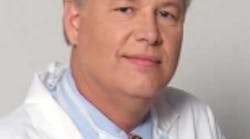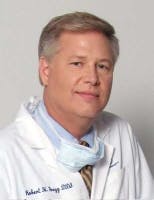By Robert H. Gregg II, DDSAbstractThis article presents a general description of the LANAP® Protocol and the benefits of its use to patients and restorative dentists. Used by a trained and certified dentist or periodontist, it is a surgical laser procedure designed for the treatment of periodontitis through regeneration rather than resection. The LANAP procedure is a protocol that deals with inflammation, the infectious process, occlusion, tooth mobility, and an osseous component. It is a rather simple, but elegant, protocol that tips the scales in favor of periodontal regeneration.LANAP Protocol: what is it?Although approximately 80% of Americans suffer from some form of periodontal disease, about 97% of those with moderate to severe periodontitis are not being treated.1 These disturbing statistics need to be addressed. Acceptance of the LANAP® technique introduces a treatment option that more patients are willing to accept.During the 1990s, Dr. Delwin McCarthy and I began doing research on the use of a laser for the treatment of periodontal disease. In 1998, we published our findings on periodontal bone regeneration.2,3 In 2004, the U.S. Food and Drug Administration cleared the LANAP Protocol4 for the treatment of periodontal disease. Later, in 2007, in conjunction with our work, histological proof of not only bone generation, but new cementum mediated connective tissue attachment was published by Dr. Raymond Yukna, DMD, MS5 (University of Colorado, formerly at Louisiana State University).A key component of the protocol is the PerioLase® MVP-7TM digital dental laser developed by Millennium Dental Technologies, a true pulsed Nd:YAG laser. The wavelength of this laser is 1064 nm. It can be used to achieve peak powers in the 1,000s of watts and has the ability to vary the pulse duration (length of time of each laser pulse). This wavelength of laser light targets diseased or infected pocket tissue away from the underlying connective tissue. The necrotic epithelium is stripped from the connective tissue at the histologic level of the reté ridges. Since the laser energy is quite selective for diseased tissue, the underlying connective tissue is spared, thereby permitting healing and regeneration rather than formation of a pocket seal by long junctional epithelium.An overview of the procedureThere is no initial periodontal therapy started prior to the LANAP protocol. The LANAP procedure is generally completed in two visits, although it can be done in one.6 On average, each of the two visits is two hours long. Patients are seen at a one-week postoperative appointment for an evaluation and then at 30 days postop to have a supragingival prophylaxis.Thereafter, supportive periodontal therapy is performed every three months. Patients are closely monitored during this time. At one year, a postoperative evaluation is done, which includes full periodontal probing and full-mouth radiography. At this time, phase two dentistry can be initiated once it has been confirmed that the periodontal condition is stable.6Generally, during this first year, no restorative work that requires disturbing the periodontal tissue is done — only caries control and temporization. Subgingival cleaning and probing are discouraged. Since many of the patients who are indicated for LANAP treatment have avoided dentistry for years, they often require some restorative dentistry prior to the procedure; they would not be able to wait a year before undertaking the needed restorative treatment. In this case, direct restorations are placed as needed. When indirect restorations are indicated, temporaries are placed with the understanding that the final restorations will be placed at a later date.6LANAP trainingThe LANAP Training Continuum is a yearlong, comprehensive, live-patient, hands-on training program that dentists undergo to ensure that they are safe and effective in the LANAP technique. The first three days of training, Laser BootCamp™, focuses on safety and efficacy in the LANAP protocol. Upon completion, dentists are granted a conditional license to use the LANAP protocol and have been awarded a Standard Proficiency Certificate. Evolution 4 of the Training Continuum is designed to take place after six months of clinical LANAP practice and experience. During Evolution 4, the new LANAP "initiate" will return to gain more insights for successful, safe, and optimal LANAP protocol techniques, methodology, and laser operating parameters, and realize improved LANAP outcomes and greater clinician and operatory efficiencies. Upon completion of Evolution 4, dentists receive an Expanded Proficiency Certificate.Evolution 5 of the LANAP Training Continuum is an integral part of the established Continuum of LANAP training that, upon successful completion, leads to a certificate in "LANAP Proficiency" and elects the LANAP-proficient clinician as a fellow in the Institute for Advanced Laser Dentistry. Evolution 5 focuses on increasing energy density for even greater LANAP performance, versatility, adaptations, and increased capabilities, as well as improved clinical outcomes and management methods of clinically difficult LANAP case types. Only upon completion of Evolution 5 may the doctor use quartz fiber optics in different diameters, such as the 300- and 400-micron fibers that have been custom manufactured with the ability to curve in the extreme bend-radius that LANAP often requires. Dentists who complete Evolution 5 have achieved one of the highest levels of clinical, live patient, hands-on training in advanced laser dentistry available today.Patients' acceptance of the LANAP protocolEven patients who have traditionally avoided dental treatment or experienced traditional surgery in the past accept LANAP treatment. They are seeking an alternative to traditional surgery and are familiar and comfortable with the use of lasers for LASIK treatment for their eyes. Thus, they consider laser treatment for periodontal disease a viable alternative. Clinically, what becomes immediately apparent postoperatively is minimal discomfort, shrinkage of swollen, puffy gums, and reduction of bleeding.After the procedure, patients can see that the tissues feel and look healthier. Since LANAP treatment is not a cut-and-sew procedure, no native tissues are injured; the recession associated with traditional surgery is not present. Consequently, the patients do not have root sensitivity or teeth that appear longer.6The LANAP protocol allows for the best esthetics due to a more ideal crown-to-root ratio and naturally appearing gingival contours. This, in turn, makes cosmetic dentistry and periodontal maintenance for the patient far more ideal. It all leads to the long-term health, appearance, and success of periodontal patients after being treated with the LANAP protocol. Many dentists who use LANAP treatment report that the procedure allows patients who are fearful of dentistry not only to seek treatment, but to continue their dental care. After LANAP treatment, patients realize how much dentistry has changed, and they are inspired to continue their care.Disclosure — The Institute for Advanced Laser Dentistry (IALD) is an internationally recognized, nonprofit educational and research center dedicated to providing evidence-based clinical training in advanced laser dentistry therapies. Formed in 2001 by dentists Robert H. Gregg II, DDS, and Delwin K. McCarthy, DDS, the IALD is both ADA CERP and AGD PACE accredited, and is committed to its continuing education programs. The IALD includes more than 20 certified instructors who train dental professionals in laser dentistry techniques, including the LANAP® protocol. In addition, the organization aims to reach more underserved patients with periodontal disease by offering free treatment to qualified patients in their training clinic — about $750,000 in free dental services each year. The IALD's ultimate goal is for the percentage of patients seeking treatment for periodontitis to reach the percentage of patients seeking general dental care. For more information, please visit www.theiald.com.
Robert H. Gregg II, DDS, along with Delwin K. McCarthy, DDS, formed The Institute for Advanced Laser Dentistry in 2001. It is an internationally recognized, nonprofit educational and research center dedicated to providing evidence-based clinical training in advanced laser dentistry therapies. The IALD is both ADA CERP and AGD PACE accredited, and is committed to its continuing education programs.References1. 7th Annual Conference on Periodontal Surgery on Nov. 8-9, 1996. Michael Newman, DDS, PhD.2. Gregg RH, McCarthy D. Laser ENAP for periodontal bone regeneration. Dentistry Today, 1998; 17(5):88-91.3. Gregg RH, McCarthy D. Laser ENAP for Periodontal Ligament (PDL) Regeneration. Dentistry Today, 1998; 17(11).4. 510(k) Number K030290, FDA Cleared July 2004.5. Yukna R, et al. Histologic evaluation of an Nd:YAG laser-assisted new attachment procedure in humans. Int J Periodontics Restorative Dent 2007; 577-587.6. Harris DM, Gregg RH, McCarthy DK, Colby LE, Tilt LV. Laser-assisted new attachment procedure in private practice. General Dentistry, 2004; 52(5):396-403.







